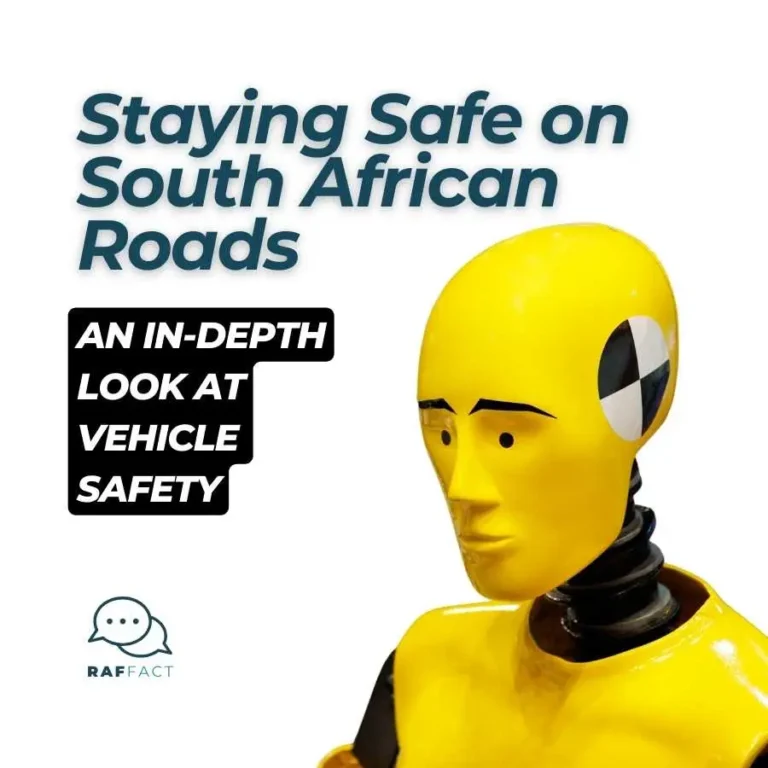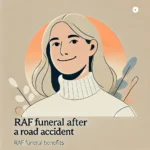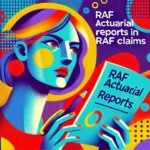Vehicle safety is a topic of paramount importance, particularly in South Africa, where road accidents claim thousands of lives each year.
Ensuring that our vehicles are equipped with the latest safety features and adhering to traffic regulations can significantly reduce the risk of accidents and fatalities.
For South African drivers and road users, understanding and prioritizing vehicle safety is not just about compliance but about protecting lives and fostering a culture of responsible driving.
In this article, we will explore the current landscape of vehicle safety in South Africa.
We will delve into the latest statistics on road accidents, the essential safety features that every vehicle should have, and the regulations that govern vehicle safety standards. Additionally, we will discuss the efforts being made to educate the public, the technological innovations enhancing safety, and the challenges we face in making our roads safer.
By the end, you’ll have a comprehensive understanding of what it takes to stay safe on South African roads and how we can collectively work towards a safer driving environment.
Let’s embark on this journey to better understand vehicle safety in South Africa, highlighting both the progress made and the areas where improvement is still needed.
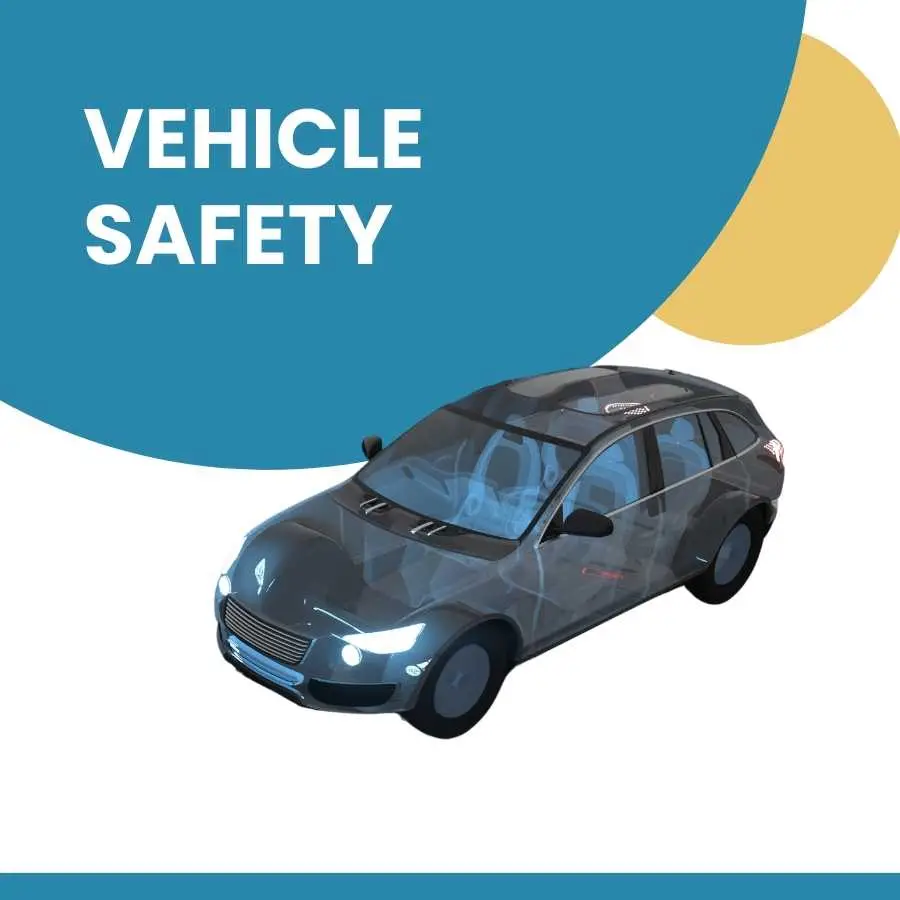
Current Landscape of Vehicle Accidents in South Africa
Recent Statistics and Trends
Vehicle accidents in South Africa remain a significant concern, despite recent efforts to improve road safety. During the previous festive season, there was a 2.3% decline in fatal road crashes compared to the previous year.
This period saw 1,184 fatal crashes, down from 1,212 the year before. While this decline is a positive sign, the overall number of road accidents remains alarmingly high.
Comparing these figures with previous years provides a clearer picture of the trends and improvements. For instance, the previous festive season experienced a 13.9% reduction in road fatalities, dropping from 1,685 to 1,451.
This steady decline over the past few years indicates that efforts to enhance road safety are beginning to bear fruit. However, the challenge remains to sustain and accelerate this downward trend.
The majority of fatalities during the last festive season involved pedestrians, who accounted for 40.9% of the deaths, followed by passengers at 33.6%, drivers at 24.6%, and cyclists at 0.8%.
These statistics underscore the need for comprehensive safety measures that protect all road users, not just those behind the wheel.
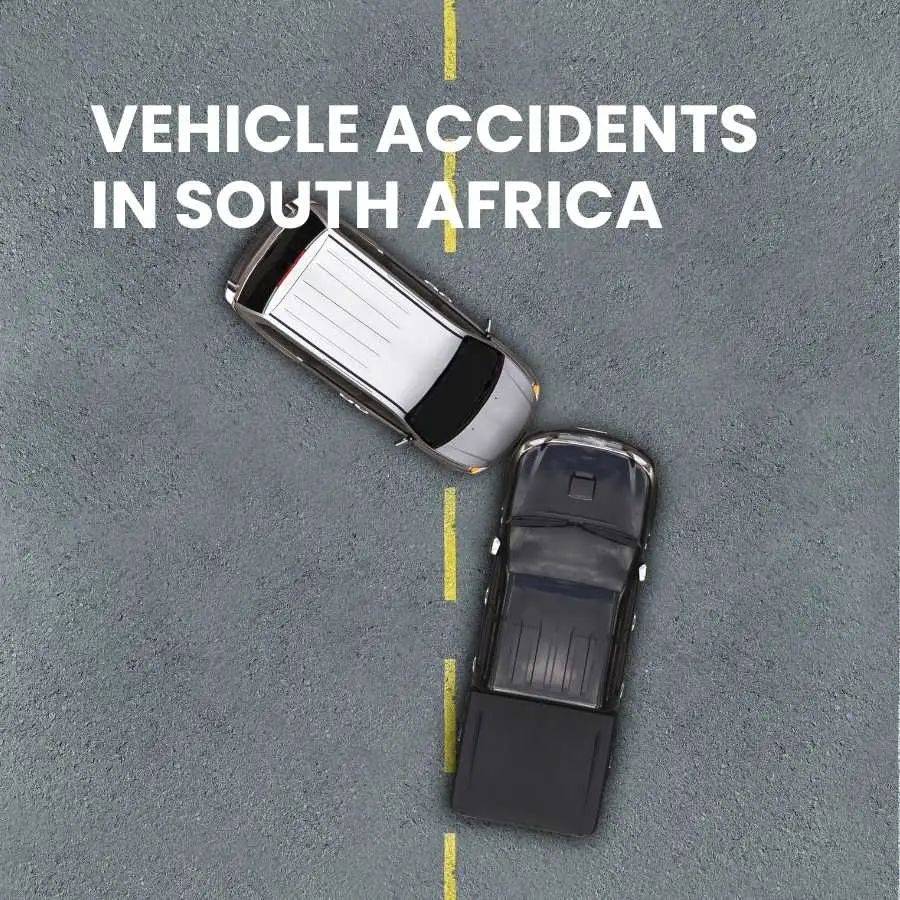
Key Factors Contributing to Accidents
Understanding the factors that contribute to vehicle accidents is crucial for developing effective prevention strategies. In South Africa, human factors are the primary cause of road accidents, contributing to 80.8% of incidents.
This includes behaviors such as speeding, distracted driving, and driving under the influence of alcohol or drugs. These risky behaviors significantly increase the likelihood of accidents and fatalities.
Environmental conditions also play a role in road accidents. During the previous festive season, adverse weather conditions such as heavy rain contributed to 10.4% of accidents.
Poor visibility and slippery roads can lead to loss of vehicle control, emphasizing the need for drivers to adjust their driving habits according to weather conditions.
Vehicle-related issues, although contributing to a smaller percentage of accidents (8.8%), are still a significant factor.
Mechanical failures, such as brake malfunctions or tire blowouts, can result in severe accidents. Regular vehicle maintenance and safety checks are essential to prevent these types of incidents.
Provinces in South Africa show varying trends in road fatalities.
For example, the Free State, Eastern Cape, Northern Cape, Limpopo, and North West provinces have seen declines in fatalities, while Gauteng, KwaZulu-Natal, Mpumalanga, and the Western Cape have experienced increases.
These regional differences highlight the need for targeted interventions and localized strategies to address the unique challenges faced by different areas.
By addressing these key factors and continuing to implement comprehensive safety measures, South Africa can further reduce the number of vehicle accidents and create a safer environment for all road users.
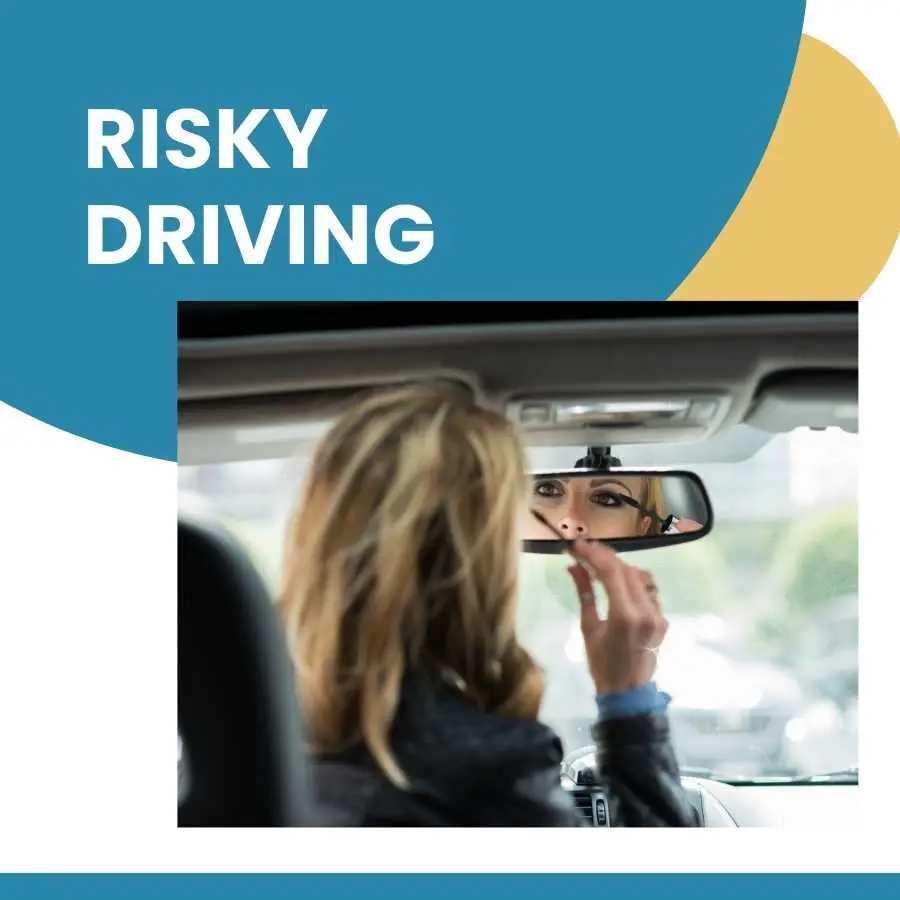
Common Vehicle Safety Features in South African Cars
Essential Safety Features
Ensuring vehicles are equipped with essential safety features is a critical step toward reducing accidents and protecting lives on South African roads. Here are some of the most common and vital safety features found in cars:
- Anti-lock Braking System (ABS): ABS prevents the wheels from locking up during braking, maintaining steering control and reducing stopping distances. This system is especially crucial during emergency stops or when driving on slippery surfaces.
- Electronic Stability Control (ESC): ESC helps drivers maintain control of their vehicles during extreme steering maneuvers by detecting and reducing loss of traction. It automatically applies brakes to individual wheels to keep the vehicle stable and prevent skidding.
- Airbags: Most modern vehicles come equipped with front airbags, and many also include side and curtain airbags. Airbags cushion the impact during a collision, protecting occupants from severe injuries.
- Seatbelt Pretensioners: These devices tighten the seatbelts immediately upon detecting a collision, reducing the slack and restraining occupants more effectively. This helps minimize movement and the risk of injury during a crash.
- Child Safety Features: ISOFIX mounting points for child seats ensure that child restraints are securely fitted. Properly installed child seats significantly reduce the risk of injury to young passengers in the event of an accident.

Importance of Advanced Safety Technologies
While essential safety features provide a solid foundation, advanced safety technologies offer an additional layer of protection by actively preventing accidents. Here are some advanced features that are increasingly common in South African vehicles:
- Autonomous Emergency Braking (AEB): AEB systems detect an imminent collision and automatically apply the brakes if the driver does not react in time. This technology can either prevent an accident or reduce the severity of the impact.
- Lane Departure Warning (LDW) and Lane Keeping Assist (LKA): LDW alerts the driver if the vehicle begins to drift out of its lane without signaling. LKA goes a step further by gently steering the vehicle back into its lane, helping prevent accidents caused by driver distraction or drowsiness.
- Blind Spot Monitoring (BSM): BSM systems use sensors to detect vehicles in the driver’s blind spots and alert the driver to their presence. This reduces the risk of side collisions when changing lanes.
- Rearview Cameras and Parking Sensors: These features assist drivers in parking and reversing by providing visual and audio warnings about obstacles behind the vehicle. They help prevent minor accidents and enhance overall vehicle maneuverability.
The adoption of these advanced safety technologies is influenced by global safety standards, such as those promoted by the Global NCAP’s Safer Cars for Africa initiative.
By incorporating both essential and advanced safety features, vehicles in South Africa can offer enhanced protection, helping to reduce the number of accidents and save lives.
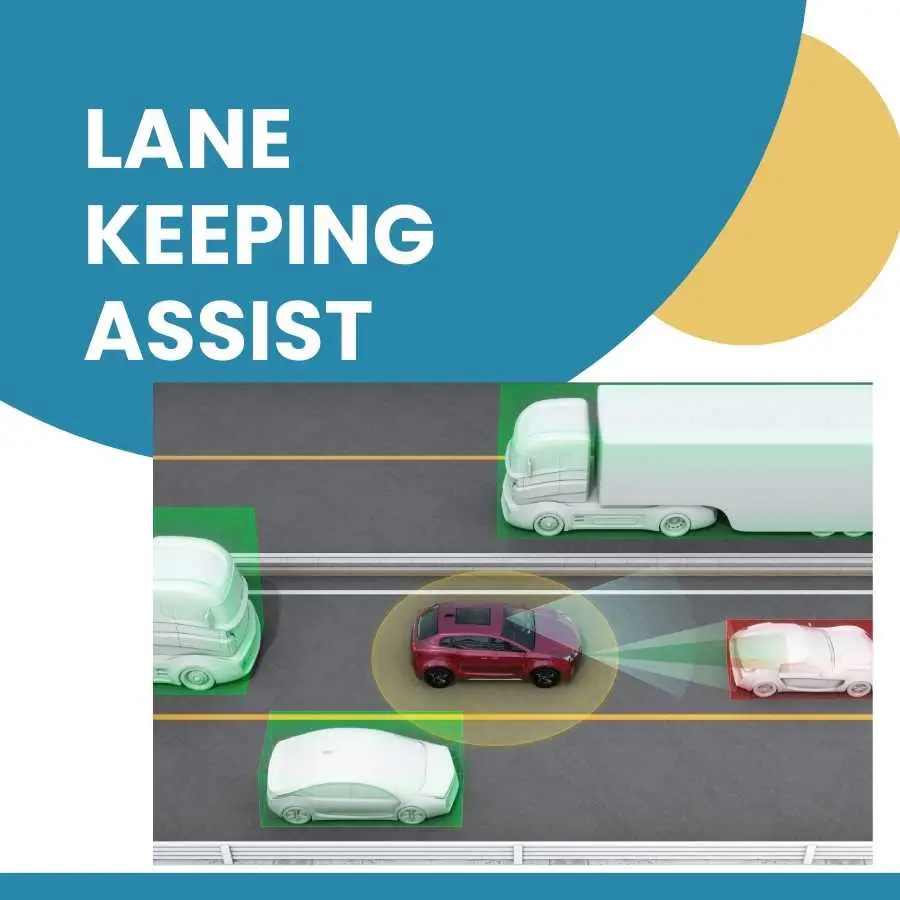
Vehicle Safety Regulations and Standards
National Road Traffic Act and SABS
The foundation of vehicle safety in South Africa is built upon robust legislation and standards designed to ensure the safety of all road users. The primary piece of legislation governing vehicle safety is the National Road Traffic Act of 1996.
This act sets out the regulations for vehicle standards, driver behavior, and road safety measures.
It mandates essential safety features in all vehicles, such as seatbelts and safety glass, and sets the framework for vehicle registration, licensing, and roadworthiness testing.
In addition to the National Road Traffic Act, the South African Bureau of Standards (SABS) plays a crucial role in setting safety standards for vehicles.
The SABS develops and enforces standards for various vehicle components, ensuring they meet specific safety criteria. These standards cover a wide range of aspects, from the structural integrity of vehicles to the quality of brakes and lighting systems.
By adhering to SABS standards, manufacturers help ensure that their vehicles provide a high level of safety for consumers.
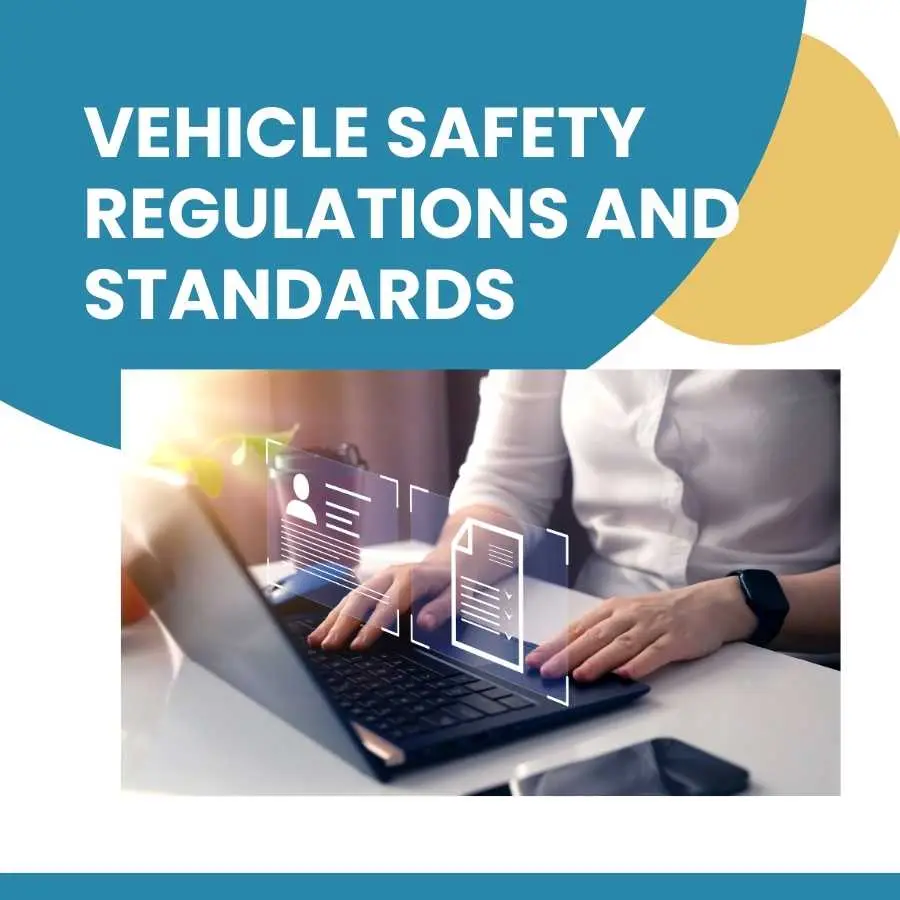
Global NCAP and Safer Cars for Africa
While national regulations provide a solid framework for vehicle safety, international safety initiatives have also significantly influenced local standards.
The Global New Car Assessment Program (Global NCAP), through its Safer Cars for Africa initiative, has been instrumental in promoting higher safety standards for vehicles sold in South Africa.
Global NCAP conducts crash tests and publishes safety ratings for various car models, providing valuable information to consumers about the safety of their vehicles.
These crash tests assess the crashworthiness and overall safety of vehicles, encouraging manufacturers to improve their safety features to achieve higher ratings.
The public dissemination of these results has increased consumer awareness and demand for safer vehicles, pressuring manufacturers to adhere to higher safety standards.
The Safer Cars for Africa initiative has brought attention to the importance of features like airbags, Anti-lock Braking Systems (ABS), and Electronic Stability Control (ESC).
By setting a benchmark for vehicle safety, Global NCAP has helped elevate the overall safety standards of vehicles available in the South African market.
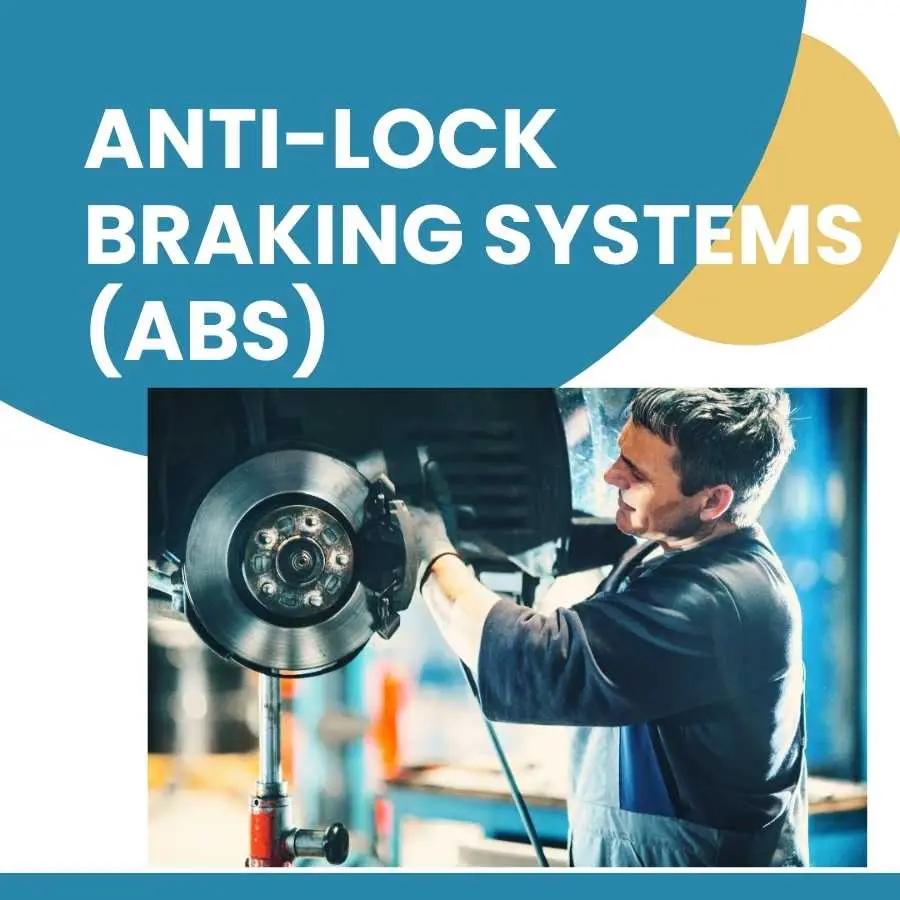
Recent and Proposed Changes
To continually improve vehicle safety, South Africa has seen several recent changes and proposed updates to its vehicle safety laws and regulations.
These changes aim to address ongoing challenges and adapt to emerging safety needs:
- Zero Alcohol Limit: There is a proposal to implement a zero-tolerance policy for alcohol consumption among drivers. This means that any detectable level of alcohol in a driver’s blood could lead to penalties. This change is aimed at reducing the number of accidents caused by drunk driving, a significant issue on South African roads.
- Increased Penalties and Enforcement: Proposed amendments to the National Road Traffic Act include stricter penalties for traffic violations and more rigorous enforcement of traffic laws. This includes higher fines and potential imprisonment for serious offenses such as reckless driving and driving under the influence.
- Vehicle Roadworthiness: There is an ongoing emphasis on ensuring that vehicles on the road are roadworthy. This includes regular inspections and mandatory roadworthiness tests, especially for older vehicles. Stricter checks are being proposed to prevent unroadworthy vehicles from being driven, thereby reducing the risk of accidents caused by mechanical failures.
- Child Safety Regulations: New regulations are being considered to improve child safety in vehicles. This includes stricter requirements for child restraint systems, ensuring that children under a certain age or weight are appropriately secured in car seats that meet national safety standards.
These updates reflect a broader commitment to enhancing road safety and reducing the high rates of road traffic accidents in South Africa.
By aligning local regulations with international standards and addressing specific safety challenges, South Africa aims to create a safer environment for all road users.
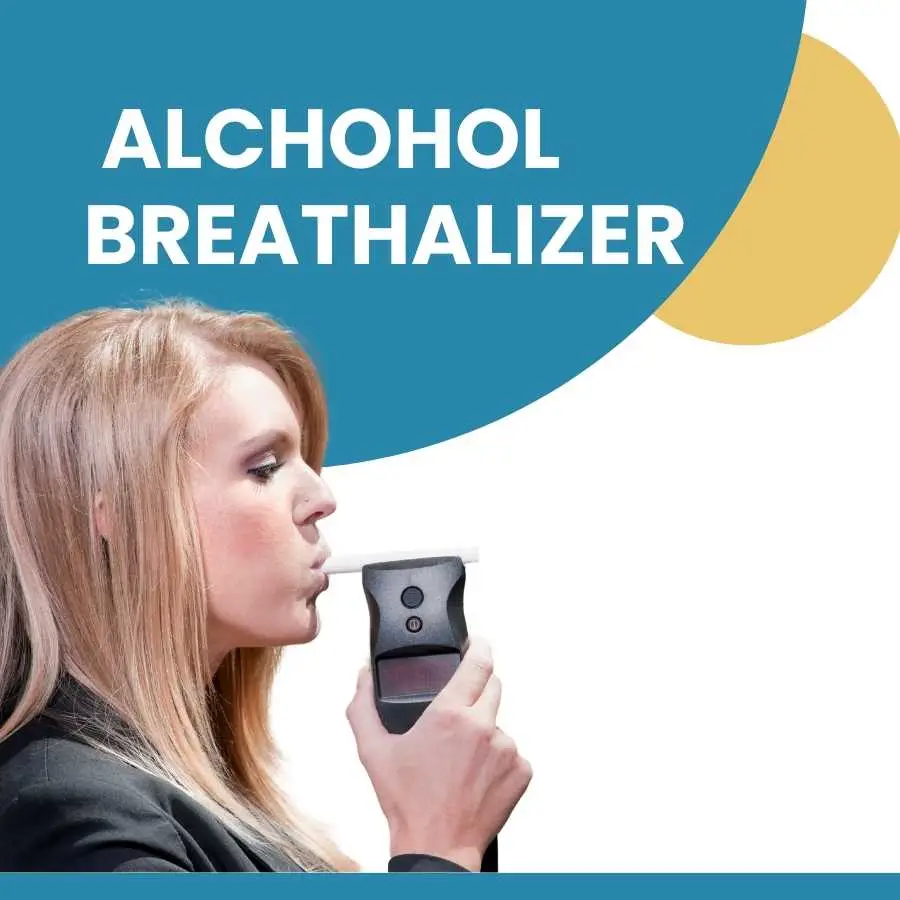
Efforts to Educate the Public on Vehicle Safety
Government Campaigns and Initiatives
In South Africa, the government plays a pivotal role in raising public awareness about vehicle safety through various campaigns and initiatives.
One of the most prominent efforts is the Arrive Alive campaign.
Launched by the government, Arrive Alive focuses on promoting road safety through extensive public education and awareness campaigns. It covers critical issues such as speeding, drunk driving, pedestrian safety, and the importance of wearing seatbelts.
The campaign leverages various media channels, including television, radio, and social media, to disseminate safety messages and engage with the public.
The Department of Transport also runs several road safety initiatives, particularly during peak travel periods like the festive season and Easter.
These initiatives often include increased visibility of traffic law enforcement, random vehicle checks, and roadblocks to ensure compliance with safety regulations. The department also conducts targeted campaigns to address specific issues, such as pedestrian safety and the dangers of distracted driving.
These efforts aim to create a culture of safety among road users and reduce the incidence of road traffic accidents.
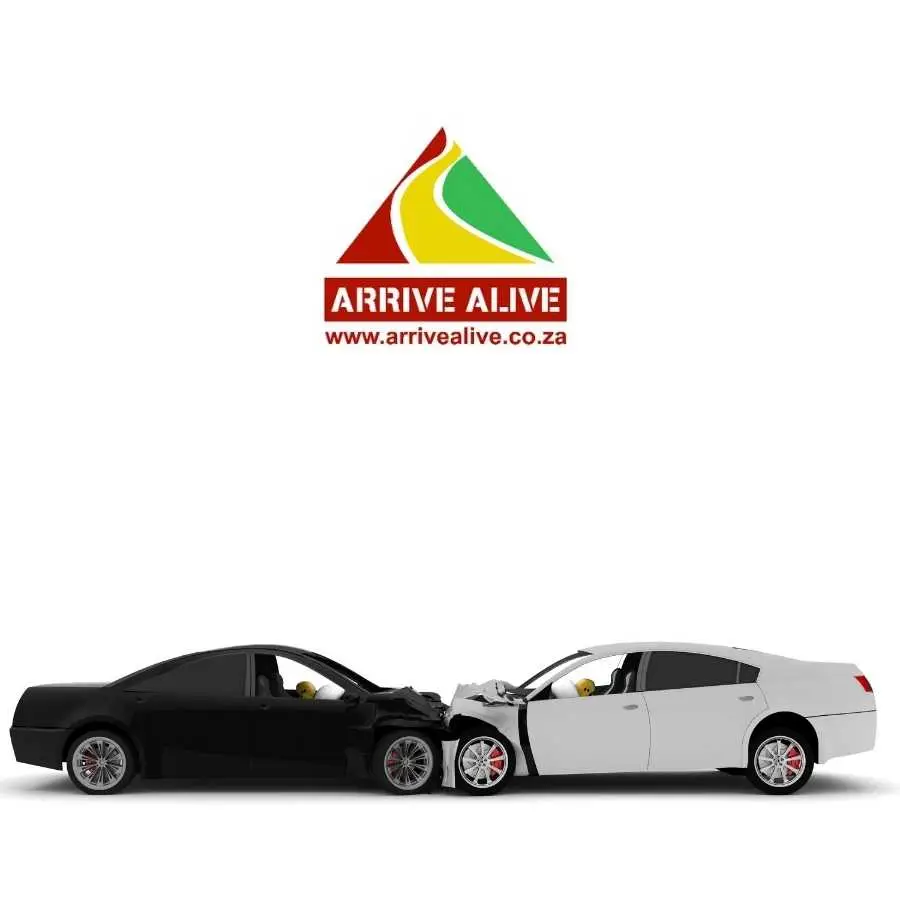
Role of NGOs and Private Sector
Non-governmental organizations (NGOs) and the private sector significantly contribute to road safety education and awareness. The Automobile Association of South Africa (AA) is a leading NGO that advocates for road safety through various programs and campaigns.
The AA conducts driver education courses, public safety announcements, and community outreach programs to promote safe driving practices. They also collaborate with government bodies to advocate for stronger road safety regulations and better enforcement.
Car manufacturers are also actively involved in promoting vehicle safety. Many manufacturers run advertising campaigns highlighting the safety features of their vehicles and educating consumers about the benefits of advanced safety technologies.
These campaigns help raise awareness about the importance of vehicle safety and encourage consumers to prioritize safety when purchasing a vehicle.
Insurance companies, such as Discovery Insure, also play a role in promoting road safety. Through programs like Vitality Drive, they incentivize safe driving behaviors by offering rewards and discounts on insurance premiums.
These programs use telematics technology to monitor driving habits and provide feedback to drivers, encouraging them to adopt safer driving practices.

Notable Campaigns and Programs
Several campaigns and programs have made a significant impact on public awareness and behavior regarding vehicle safety in South Africa. Here are a few notable examples:
- Arrive Alive Campaign: This government-led initiative has been highly effective in raising awareness about road safety. By using a combination of media channels and public engagement activities, Arrive Alive has contributed to a gradual decline in road fatalities, particularly during high-risk periods like the festive season.
- Department of Transport Festive Season and Easter Campaigns: These intensive road safety campaigns have successfully reduced road fatalities during peak travel times. The increased presence of traffic enforcement and public awareness drives during these periods have helped improve compliance with traffic laws and promote safer driving behaviors.
- Automobile Association (AA) Initiatives: The AA’s road safety campaigns and driver education programs have positively influenced driver behavior and public attitudes towards vehicle safety. Their advocacy efforts have also led to stronger road safety regulations and better enforcement practices.
- Discovery Insure’s Vitality Drive Program: By incentivizing safe driving behaviors, the Vitality Drive program has led to noticeable improvements in driving habits among participants. The use of telematics technology to monitor and provide feedback on driving behavior has proven effective in promoting a culture of safety among drivers.
- Vodacom’s “Be the Better Guy” Campaign: This campaign focuses on promoting responsible driving behaviors through social media and other platforms. By sharing stories and tips on safe driving, the campaign emphasizes the human impact of road accidents and encourages drivers to make safer choices.
These campaigns and programs demonstrate the collective efforts of the government, NGOs, and the private sector in improving road safety awareness and promoting safer driving practices.
By continuing to invest in public education and awareness initiatives, South Africa can further reduce road traffic accidents and enhance the safety of all road users.
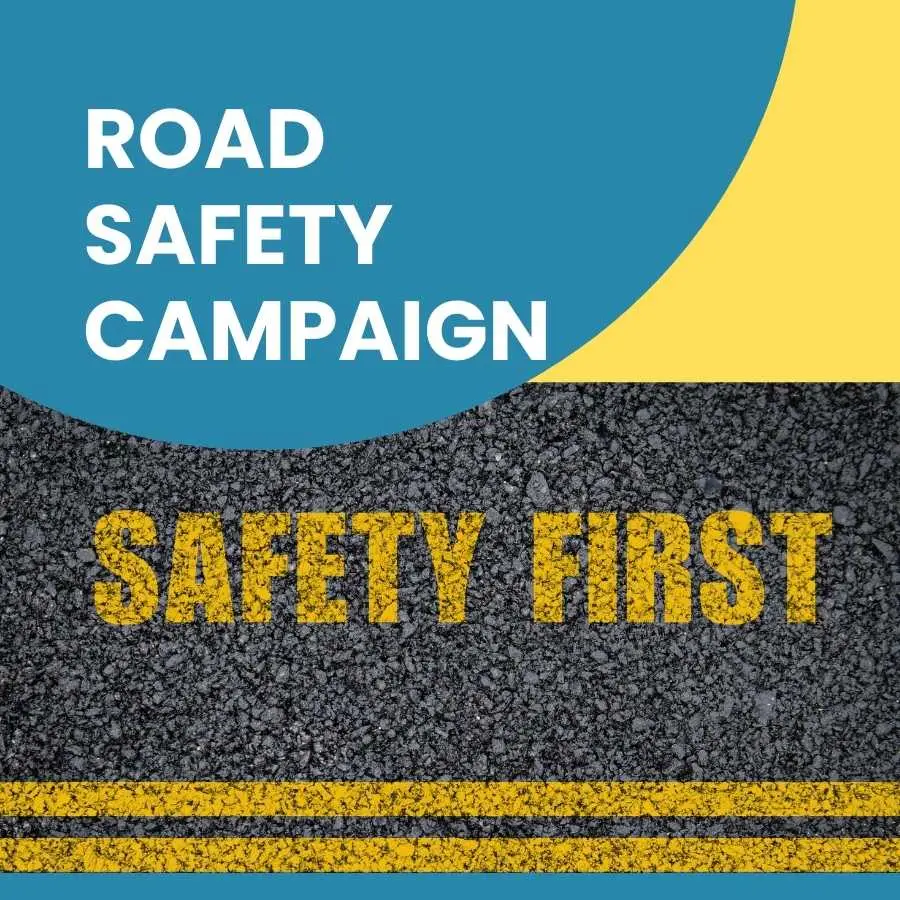
Technological Innovations Enhancing Vehicle Safety
Telematics and Insurance Programs
Telematics technology has revolutionized the way we approach vehicle safety by promoting safe driving habits and providing valuable data on driver behavior.
One of the most notable applications of telematics in South Africa is Discovery Insure’s Vitality Drive program.
This program uses telematics devices installed in vehicles to monitor various aspects of driving behavior, such as speed, braking, and nighttime driving.
The Vitality Drive program rewards safe driving behaviors with discounts on insurance premiums and other incentives.
Drivers receive regular feedback on their driving performance through a mobile app, allowing them to understand and improve their habits.
By incentivizing safe driving, telematics programs like Vitality Drive help reduce the risk of accidents and encourage a culture of safety among drivers.
In addition to promoting individual driver safety, telematics data can also be used to identify high-risk areas and times, enabling targeted interventions and enforcement by authorities.
This data-driven approach enhances overall road safety and helps reduce the number of traffic accidents.
V2X Communication and Smart Traffic Systems
Vehicle-to-Everything (V2X) communication and smart traffic systems represent the next frontier in vehicle safety technology. V2X technology allows vehicles to communicate with each other and with road infrastructure, providing real-time information about traffic conditions, road hazards, and other critical data.
This communication can improve situational awareness for drivers and enable more informed decision-making.
V2X technology includes several components:
- Vehicle-to-Vehicle (V2V): Enables direct communication between vehicles to share information about speed, location, and direction. This can help prevent collisions by providing early warnings about potential hazards.
- Vehicle-to-Infrastructure (V2I): Allows vehicles to communicate with traffic signals, road signs, and other infrastructure. This can optimize traffic flow, reduce congestion, and enhance safety at intersections.
- Vehicle-to-Pedestrian (V2P): Enhances safety for pedestrians and cyclists by allowing vehicles to detect their presence and communicate potential dangers.
In addition to V2X communication, intelligent traffic management systems use sensors, cameras, and artificial intelligence to monitor and manage traffic in real-time.

These systems can adjust traffic signal timings, detect accidents, and provide real-time traffic updates to drivers.
By optimizing traffic flow and reducing congestion, smart traffic systems help create a safer and more efficient road network.
Emerging technologies like V2X and smart traffic systems have the potential to transform vehicle safety in South Africa. By enabling more connected and intelligent transportation, these innovations can significantly reduce the risk of accidents and enhance the overall safety of our roads.
As these technologies continue to develop and become more widely adopted, they will play a crucial role in creating a safer driving environment for all road users.
Challenges and Barriers to Improving Vehicle Safety
Infrastructure Deficiencies
One of the most significant challenges to vehicle safety in South Africa is the state of the country’s road infrastructure.
Poor road conditions, such as potholes, inadequate signage, and insufficient lighting, contribute to a high number of accidents. These issues are particularly prevalent in rural areas, where roads often receive less maintenance and investment compared to urban centers.
The urban-rural disparity in road quality means that rural residents face a higher risk of accidents due to the deteriorating infrastructure.
Inadequate road maintenance not only increases the likelihood of accidents but also exacerbates vehicle wear and tear, leading to higher maintenance costs for drivers.
Addressing these infrastructure deficiencies requires significant investment and a concerted effort by local and national governments to prioritize road safety improvements.

Inconsistent Enforcement and Corruption
The enforcement of traffic laws in South Africa is another major barrier to improving vehicle safety. Inconsistent enforcement and corruption within traffic law enforcement agencies undermine the effectiveness of road safety regulations.
Many traffic violations go unpunished due to insufficient resources, lack of training, or corrupt practices among law enforcement officers.
Corruption can lead to unroadworthy vehicles being allowed on the road and traffic offenders escaping penalties. This reduces the deterrent effect of traffic laws and encourages risky driving behaviors.
Strengthening enforcement mechanisms and addressing corruption within the traffic law enforcement system are critical steps toward improving road safety.
Economic Barriers
Economic factors play a significant role in vehicle safety. Many South Africans cannot afford new vehicles equipped with the latest safety features, resulting in a reliance on older, less safe vehicles.
Advanced safety technologies, such as Autonomous Emergency Braking (AEB) and Lane Keeping Assist (LKA), are often available only in higher-end models, making them inaccessible to a large segment of the population.
The cost of regular vehicle maintenance and safety checks also poses a challenge, particularly for low-income individuals.
Financial constraints may lead to delayed repairs and maintenance, increasing the risk of mechanical failures and accidents. Making vehicle safety more affordable through subsidies, incentives, and financing options can help address these economic barriers and promote the use of safer vehicles.
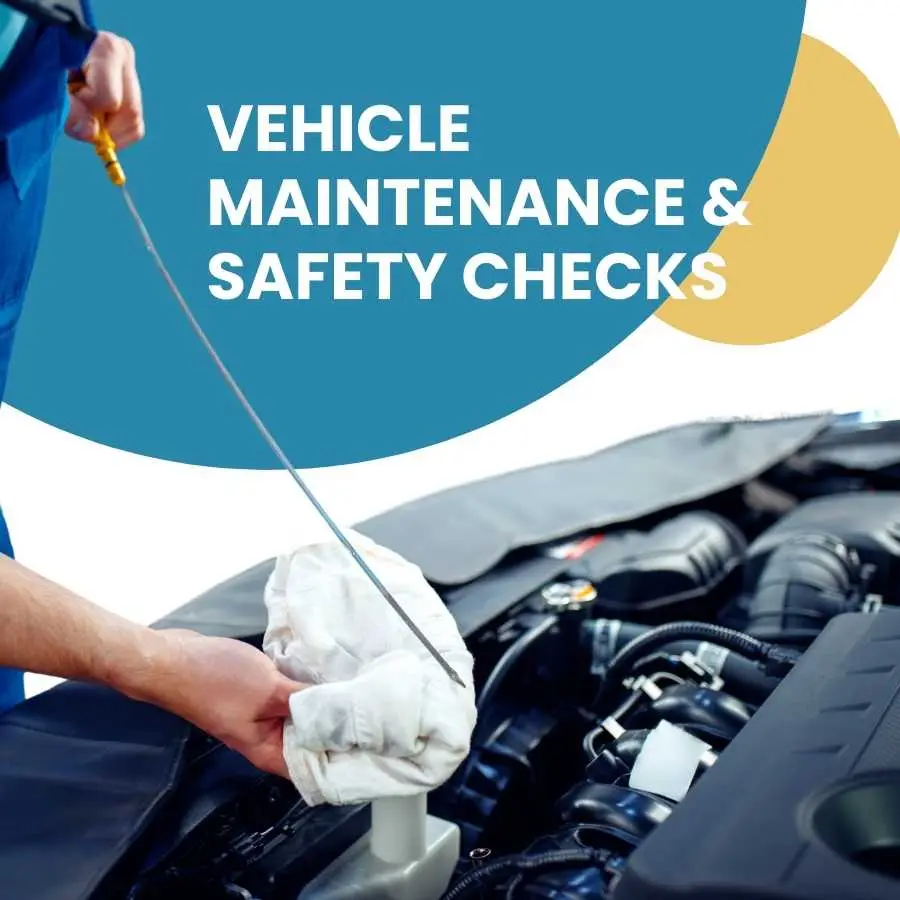
Public Behavior and Safety Culture
Driver behavior and public attitudes toward road safety significantly impact vehicle safety in South Africa. Reckless driving behaviors, such as speeding, drunk driving, and distracted driving, are prevalent and contribute to a high number of accidents.
Changing these behaviors requires extensive public education and awareness campaigns to emphasize the importance of safe driving practices.
Additionally, there is often a lack of emphasis on vehicle safety among drivers and passengers. Many people do not consistently use seatbelts or child safety seats, and there is a general disregard for the potential consequences of unsafe driving.
Fostering a culture of safety requires continuous efforts to educate the public about the importance of vehicle safety features and responsible driving behaviors.
Promoting a safety-first mindset among all road users involves collaboration between the government, NGOs, and the private sector.
By addressing these cultural and behavioral challenges, South Africa can make significant strides in reducing road accidents and enhancing vehicle safety.
Overall, improving vehicle safety in South Africa involves overcoming a range of challenges and barriers.
Addressing infrastructure deficiencies, ensuring consistent enforcement of traffic laws, making vehicle safety more affordable, and fostering a culture of safety are essential components of a comprehensive approach to road safety.
By tackling these issues, South Africa can create a safer driving environment for all road users.
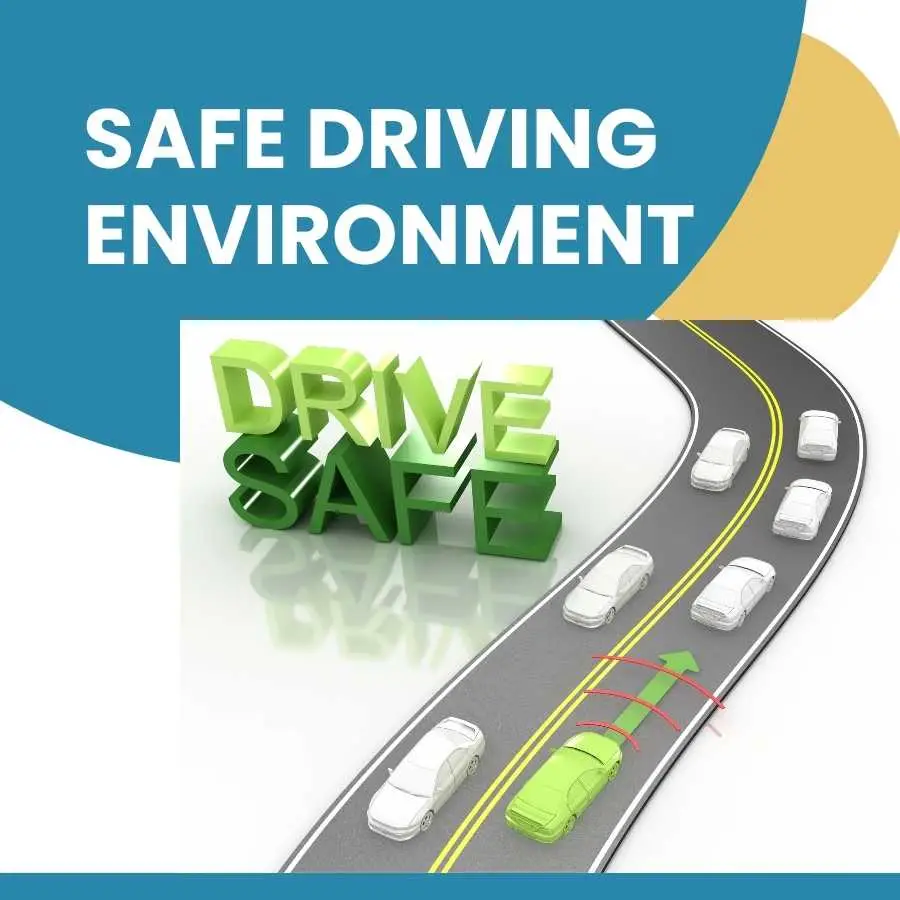
Real Stories Highlighting the Importance of Vehicle Safety
Ford Kuga Fires Incident
The Ford Kuga fires incident is a stark reminder of the critical importance of vehicle safety and manufacturer accountability. Between 2015 and 2017, several reports emerged of Ford Kuga SUVs catching fire in South Africa.
The fires were primarily caused by a faulty coolant system that led to engine overheating, which could ignite a fire under the bonnet.
Tragically, this defect resulted in the death of Reshall Jimmy, who was killed when his Kuga caught fire while he was on holiday in Wilderness, South Africa.
Jimmy’s death and the subsequent fires garnered significant media attention and public outcry, leading to an investigation by the National Consumer Commission (NCC).
The incident revealed that Ford had been slow to respond to initial complaints and concerns raised by consumers.

This lack of prompt action and transparency severely damaged Ford’s reputation and raised questions about the company’s commitment to vehicle safety.
In response to the mounting pressure and negative publicity, Ford issued a recall of over 4,500 Kuga vehicles in South Africa to address the cooling system defect.
The company also implemented a series of measures to prevent further incidents, including the replacement of affected parts and enhanced communication with Kuga owners about the necessary repairs.
The impact of the Ford Kuga fires extended beyond the immediate recall and repairs. It highlighted the need for stringent vehicle safety standards and robust enforcement mechanisms.
The incident also emphasized the importance of timely and transparent communication from manufacturers when safety issues arise. For consumers, it underscored the significance of being informed about potential safety risks and advocating for their rights.
In the wake of the Kuga fires, South African authorities and consumer protection bodies became more vigilant in monitoring vehicle safety and holding manufacturers accountable.

The incident prompted a broader discussion about the need for improved regulatory oversight and stronger penalties for non-compliance with safety standards.
Moreover, the Ford Kuga fires incident served as a catalyst for increased public awareness about vehicle safety. It encouraged consumers to be more proactive in ensuring their vehicles are safe and to demand higher safety standards from manufacturers.
This heightened awareness has contributed to a growing emphasis on vehicle safety features and regular maintenance among South African drivers.
The Ford Kuga fires are a sobering example of the potential consequences of inadequate vehicle safety measures and the importance of accountability and transparency from vehicle manufacturers.
They serve as a reminder that ensuring the safety of vehicles on the road is a shared responsibility between manufacturers, regulatory bodies, and consumers.
By learning from such incidents, we can work towards creating a safer driving environment for all.
Renault Kwid Crash Test Concerns
The Renault Kwid, a popular budget-friendly car in South Africa, has faced significant scrutiny due to its poor safety ratings in crash tests. In 2016, the Global New Car Assessment Program (Global NCAP) conducted crash tests on the Kwid and revealed alarming results.
The car received a dismal one-star rating for adult occupant protection and zero stars for child occupant protection.
These ratings highlighted serious concerns about the vehicle’s structural integrity and lack of essential safety features like airbags in the base model.
For many South African consumers, the Kwid’s affordability made it an attractive option, especially for first-time car buyers and families with tight budgets.
However, the crash test results raised serious questions about the trade-offs between cost and safety.

One such consumer, Sibusiso, a young professional from Johannesburg, had recently purchased a Renault Kwid as his first car. Attracted by its low price and stylish design, Sibusiso felt proud of his new purchase until he came across the Global NCAP crash test results.
Reading about the car’s poor safety performance deeply concerned him, as he frequently drove with his younger siblings and wanted to ensure their safety on the road.
Feeling conflicted, Sibusiso decided to research further and discovered numerous discussions and articles criticizing the Kwid’s safety.
This widespread negative feedback and the haunting images from the crash test videos led him to reconsider his decision. He realized that while the upfront cost of the Kwid was lower, the potential risks in case of an accident were too high a price to pay.
Sibusiso’s experience reflects the broader reaction among consumers who were initially drawn to the Renault Kwid for its affordability.

Many buyers, upon learning about the poor safety ratings, began to question their choice and look for alternatives that offered better protection, even if it meant stretching their budgets a bit further.
The public outcry and consumer backlash prompted Renault to take action. The company started to introduce additional safety features in subsequent models, such as adding airbags and reinforcing the vehicle’s structure to improve its crashworthiness.
While these improvements were steps in the right direction, the initial response to the poor safety ratings had already left a significant mark on consumer trust and brand reputation.
Sibusiso’s story and the broader consumer reaction to the Renault Kwid’s crash test concerns illustrate the critical importance of vehicle safety in influencing purchasing decisions.
It underscores the need for transparency and the responsibility of manufacturers to prioritize safety over cost.
For many consumers, especially those with families, the peace of mind that comes with knowing their vehicle is safe is invaluable and worth the investment.
By paying attention to safety ratings and demanding higher standards from manufacturers, consumers can drive the market towards producing safer vehicles, ultimately contributing to a reduction in road traffic accidents and fatalities.
Impact of Road Infrastructure on Personal Safety
The condition of road infrastructure in South Africa plays a significant role in vehicle safety, as poor road conditions often lead to accidents and damage to vehicles.
One such story is that of Thandiwe, a resident of a rural area in the Eastern Cape, whose life has been significantly affected by the state of local roads.
Thandiwe is a schoolteacher who commutes daily from her home to the school where she teaches. The journey, which should ideally take about 30 minutes, often becomes a harrowing experience due to the deplorable condition of the roads.
Potholes, uneven surfaces, and inadequate signage are common issues she faces every day. Despite driving cautiously, the poor road conditions have led to several close calls and a few unfortunate incidents.
On one particularly rainy morning, Thandiwe encountered a large, water-filled pothole that was not visible until it was too late.
As her car hit the pothole, one of the tires burst, causing her to lose control of the vehicle.
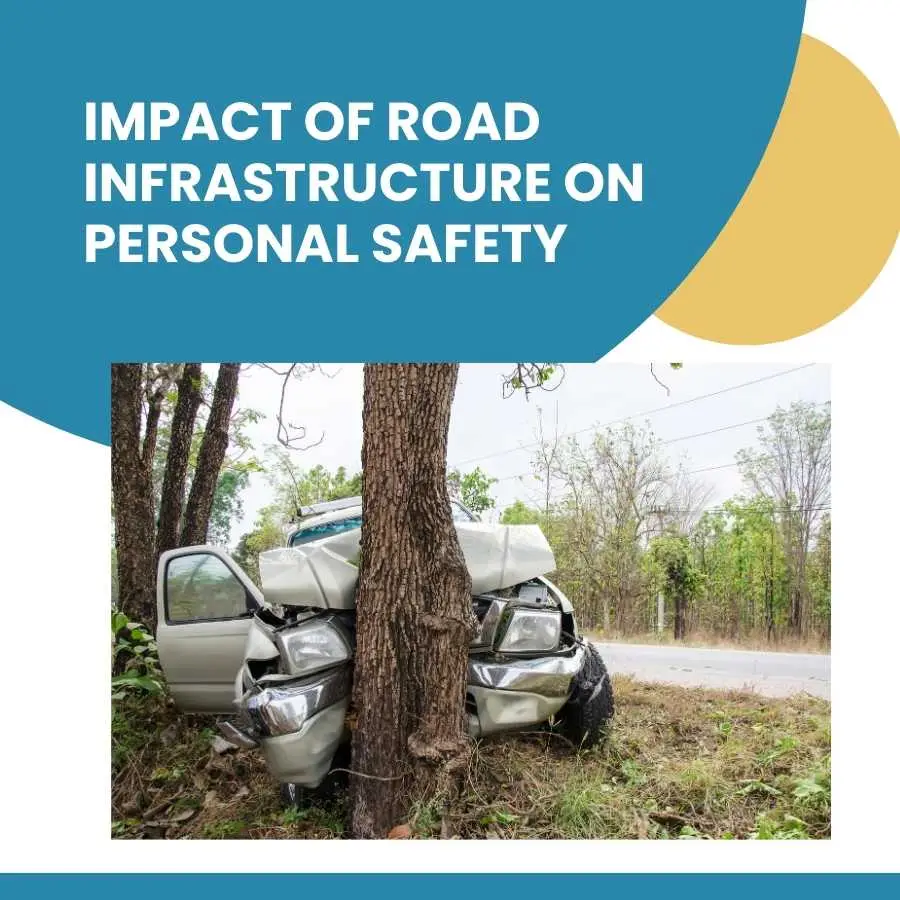
She managed to steer the car to the side of the road, but not before it had skidded and hit a small tree. Thankfully, Thandiwe was wearing her seatbelt and escaped with minor bruises, but her car was not as fortunate.
The front axle was damaged, and the repair costs were substantial.
This incident was not isolated. Thandiwe recounted how many of her neighbors and colleagues had similar stories—vehicles damaged by potholes, accidents caused by sudden swerving to avoid road hazards, and delays due to impassable roads during the rainy season.
The financial strain of constant vehicle repairs and the emotional toll of driving under such hazardous conditions were significant.
Thandiwe’s story highlights the broader issue of road infrastructure in South Africa, particularly in rural areas. The lack of maintenance and investment in road quality not only affects the daily commute but also poses severe safety risks to drivers.
Poor road conditions can cause accidents, damage vehicles, and even lead to fatalities, emphasizing the urgent need for government action and investment in road infrastructure.
The impact of these conditions extends beyond personal inconvenience and financial costs. They contribute to the overall statistics of road accidents and injuries in the country.
For many rural residents, the state of the roads can mean the difference between life and death in emergency situations, where delays caused by poor road conditions can prevent timely access to medical care.
Thandiwe’s experience underscores the importance of improving road infrastructure to enhance vehicle safety.
Adequate maintenance, timely repairs, and proper signage can prevent many accidents and make roads safer for everyone.
It also highlights the need for consistent government policies and resource allocation to address these issues, ensuring that all South Africans, regardless of where they live, have access to safe and reliable roads.
By addressing the challenges posed by poor road infrastructure, South Africa can make significant strides in improving vehicle safety and reducing the number of road traffic accidents.
This requires a collective effort from government agencies, local authorities, and communities to prioritize and invest in road safety measures.
Positive Influence of Telematics on Driving Behavior
Telematics technology has proven to be a powerful tool in promoting safe driving behaviors and reducing road accidents.
The story of David, a fleet manager for a logistics company in Pretoria, illustrates how telematics can transform driver behavior and enhance vehicle safety.
David’s company operated a fleet of delivery trucks, and he was responsible for ensuring that the drivers adhered to safety standards and maintained efficient operations.
Despite regular training sessions and safety briefings, the company faced a persistent problem: frequent minor accidents and incidents of reckless driving.
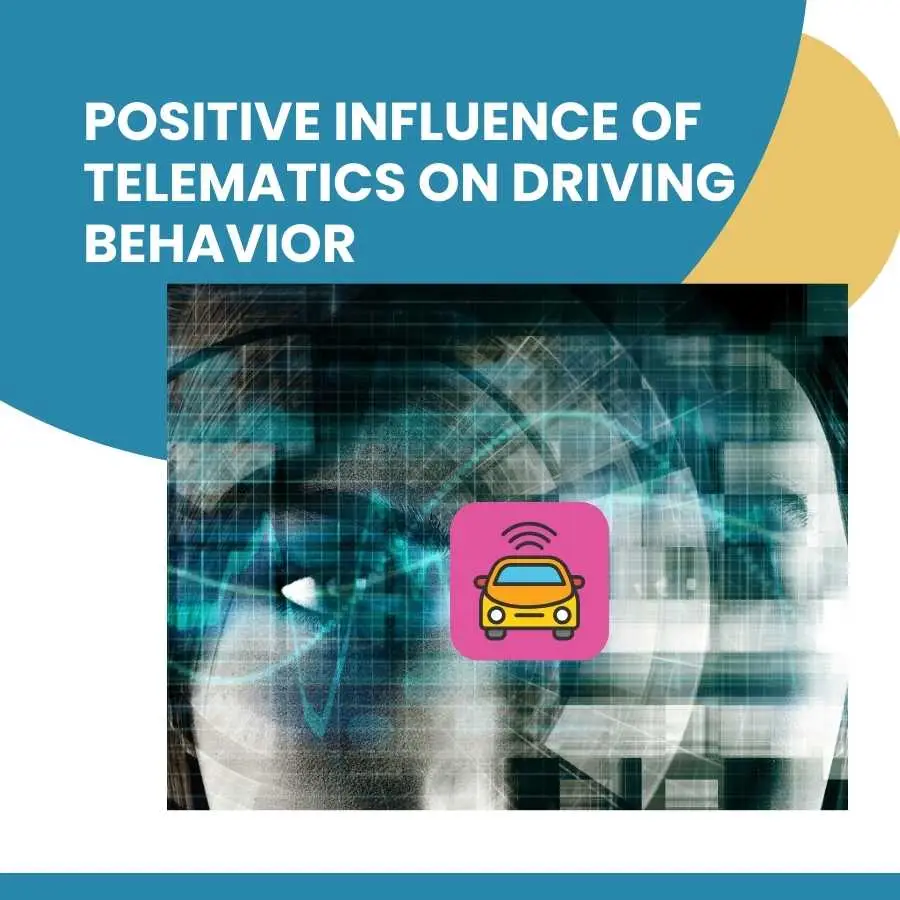
These issues not only increased operational costs due to vehicle repairs and higher insurance premiums but also posed significant safety risks.
To address these challenges, David decided to implement a telematics system across the fleet. The telematics devices installed in the trucks monitored various aspects of driver behavior, including speed, braking patterns, acceleration, and idle times.
The system provided real-time feedback to drivers and generated detailed reports that David could review to identify trends and areas for improvement.
Initially, some drivers were skeptical and resistant to the new technology, fearing that it would lead to micromanagement and penalties for minor infractions.
However, David focused on the positive aspects of the system, emphasizing that it was a tool to help them become better, safer drivers and to reward good behavior.
Within a few weeks, the impact of the telematics system became evident. The drivers received instant alerts if they exceeded speed limits or engaged in harsh braking, prompting them to adjust their behavior on the spot.
The real-time feedback helped them become more aware of their driving habits and motivated them to drive more cautiously.
David also used the data collected by the telematics system to conduct personalized coaching sessions with each driver.
By reviewing their driving patterns and discussing specific instances where they could improve, David fostered a culture of continuous improvement and accountability. The drivers appreciated the constructive feedback and the opportunity to enhance their skills.
As a result, the number of accidents and incidents of reckless driving in the fleet dropped significantly.
The drivers started taking pride in their improved performance, and the company introduced an incentive program to reward those with the best safety records. The positive reinforcement further encouraged safe driving practices.
Beyond the immediate safety benefits, the telematics system also led to operational efficiencies.
Fuel consumption decreased due to more efficient driving habits, and maintenance costs were reduced as vehicles were subjected to less wear and tear.
The data collected also helped David optimize routes and reduce idle times, leading to more timely deliveries and improved customer satisfaction.
David’s experience with telematics demonstrates the technology’s potential to positively influence driver behavior.
By providing real-time feedback and fostering a culture of safety and accountability, telematics can significantly reduce accidents and enhance overall vehicle safety.
The success of David’s fleet underscores the importance of leveraging technology to create safer roads and more responsible drivers.
Telematics is not only a valuable tool for fleet managers but also for individual drivers and insurance companies. New age insurance and safety programs use telematics to monitor personal driving habits and offer incentives for safe driving, making roads safer for everyone.
David’s story exemplifies how technology can drive meaningful change and create a safer driving environment for all road users.
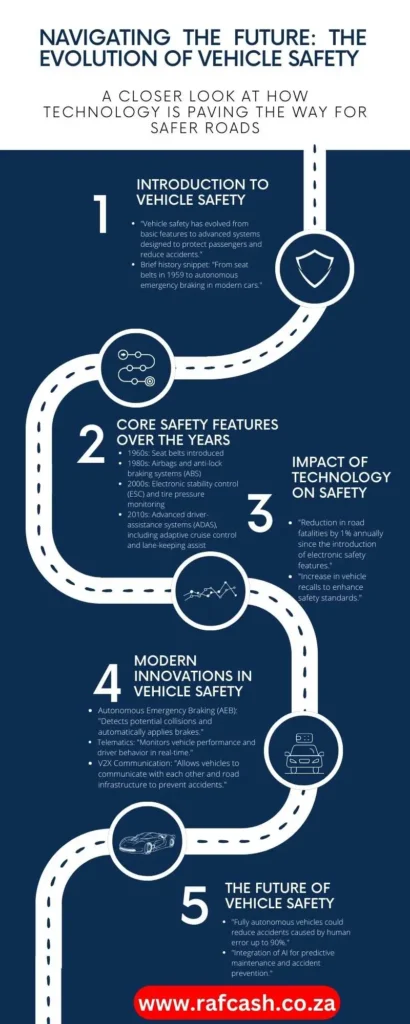
Ride-Hailing Safety Enhancements
Ride-hailing services have become an integral part of urban transportation in South Africa, offering convenience and accessibility to many commuters.
However, concerns about passenger and driver safety have always been prevalent. The introduction of new safety features in ride-hailing platforms like Bolt has significantly impacted the overall safety of these services.
Naledi’s experience as a frequent ride-hailing user in Cape Town illustrates the positive changes brought about by these innovations.
Naledi, a young professional working in Cape Town, relies on ride-hailing services for her daily commute and social outings.
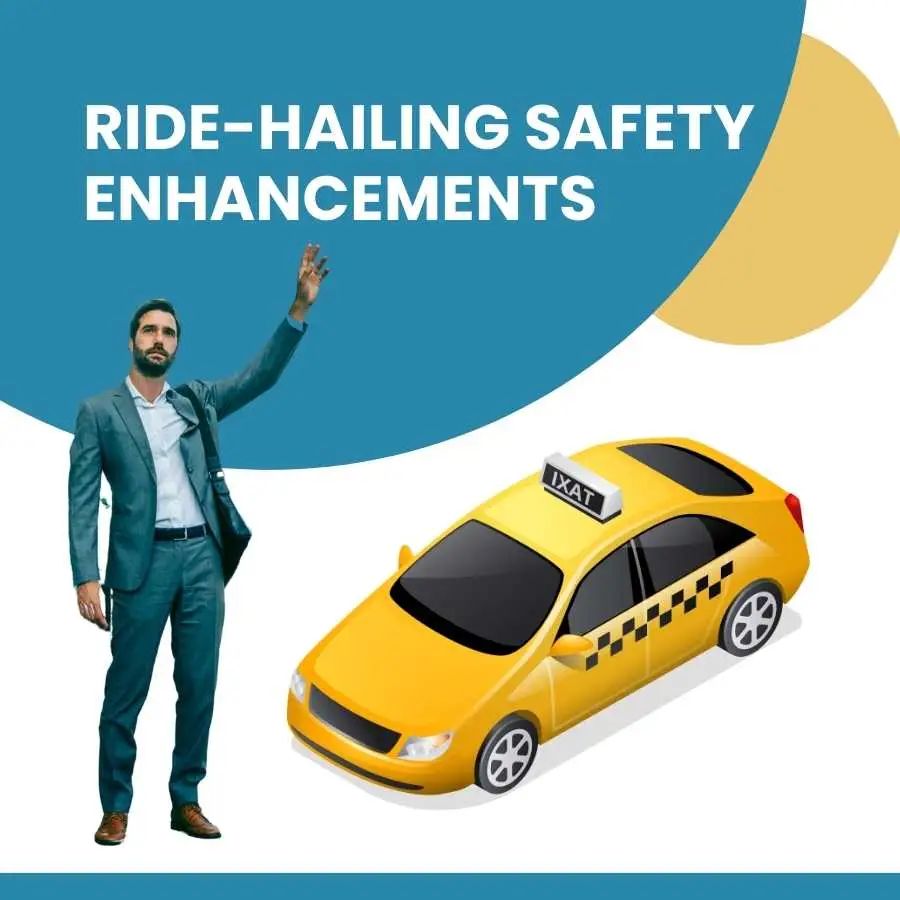
While she appreciated the convenience of these services, she often felt uneasy during late-night rides or when traveling alone.
Stories of unsafe drivers and incidents involving passengers made her cautious, and she frequently shared her trip details with friends and family as a precaution.
In response to these safety concerns, Bolt introduced several new features designed to enhance the safety of both passengers and drivers. One of the most notable features was the driver score system, which provided passengers with real-time performance feedback on their drivers.
This feature allowed riders to see a detailed breakdown of their driver’s behavior, including metrics like speed, braking, and adherence to traffic laws. The transparency and accountability this system provided helped reassure passengers about the safety of their ride.

Another critical feature was trip-sharing, which enabled passengers like Naledi to share their ride details with trusted contacts. With a few taps on her phone, Naledi could send a live link to her trip, allowing her friends and family to track her journey in real time.
This feature gave Naledi peace of mind, knowing that someone she trusted was aware of her location and could intervene if anything went wrong.
One evening, Naledi booked a ride home after a late work event. Feeling the usual apprehension about traveling alone at night, she quickly shared her trip details with her sister using the new trip-sharing feature.
Throughout the journey, she received notifications about her driver’s performance, including information about their safe driving practices. This real-time feedback, combined with the knowledge that her sister was tracking her ride, made Naledi feel significantly more secure.
During the ride, Naledi’s driver adhered strictly to speed limits, used turn signals appropriately, and drove cautiously. At one point, the driver received an alert from the app, reminding them to avoid harsh braking.
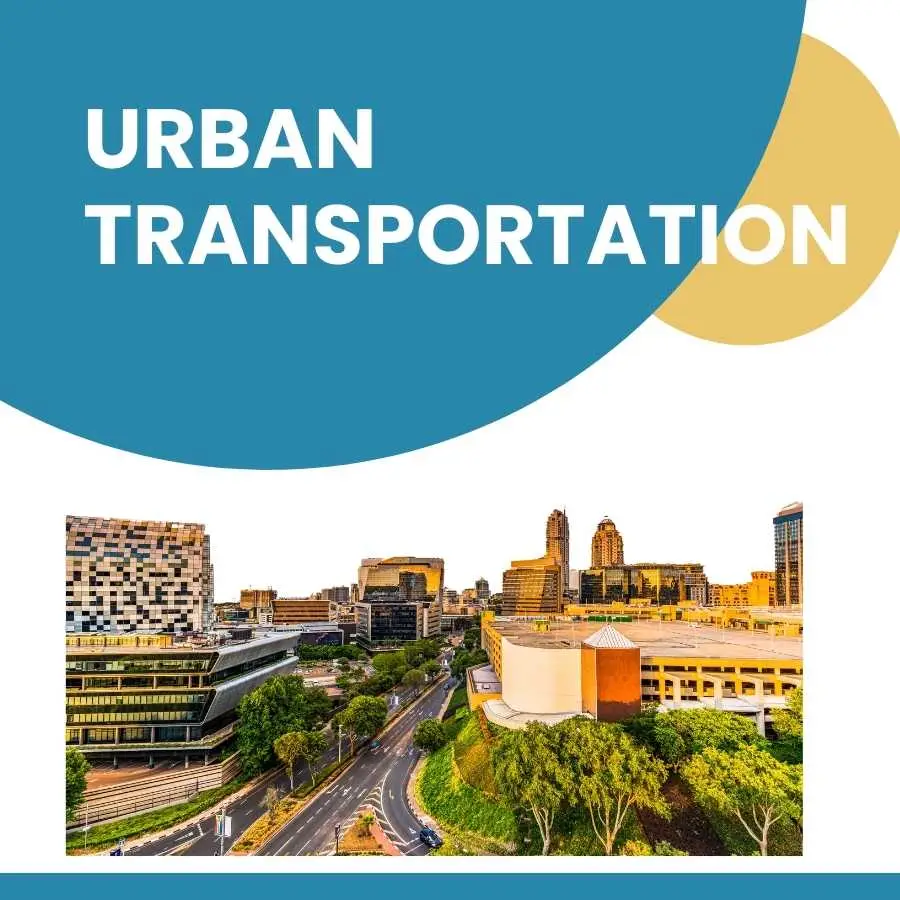
This immediate feedback system helped the driver maintain safe driving practices, which Naledi noticed and appreciated.
Upon arriving home safely, Naledi realized how much these new safety features had enhanced her ride-hailing experience. She felt more confident using the service, knowing that both her safety and the driver’s behavior were being actively monitored.
Naledi’s positive experience led her to share her newfound sense of security with her friends and colleagues, encouraging them to use ride-hailing services without fear.
The impact of these safety enhancements extended beyond just passenger reassurance. Drivers also benefited from the system, as the feedback helped them improve their driving habits, leading to higher ratings and more ride requests.
This created a positive feedback loop where safer driving was rewarded with more business, further promoting a culture of safety within the ride-hailing community.
Naledi’s story highlights the transformative impact of safety features in ride-hailing services. By leveraging technology to provide real-time feedback and enhance transparency, platforms like Uber have significantly improved the safety of their services.
These innovations not only protect passengers but also promote better driving practices among drivers, contributing to safer roads for everyone.
The success of these safety features demonstrates the potential for technology to address common concerns and enhance the overall experience of ride-hailing services. As these platforms continue to innovate and prioritize safety, they will play a crucial role in shaping the future of urban transportation in South Africa.
The Future of Vehicle Safety in South Africa
Expert Predictions and Technological Trends
Experts are optimistic about the future of vehicle safety in South Africa, driven by rapid advancements in technology and increasing awareness of road safety issues.
Several key trends and emerging technologies are expected to play a significant role in enhancing vehicle safety:
- Electric Vehicles (EVs): The adoption of electric vehicles is on the rise in South Africa. EVs are equipped with advanced safety features and have a lower center of gravity, reducing the risk of rollovers. Additionally, the quieter operation of EVs necessitates new safety measures, such as pedestrian detection systems, to prevent accidents involving pedestrians.
- Autonomous Vehicles (AVs): Although fully autonomous vehicles may still be years away from widespread adoption, semi-autonomous features are becoming more common. Technologies such as adaptive cruise control, lane-keeping assist, and autonomous emergency braking are already available in many vehicles. These features help reduce human error, which is a significant cause of accidents.
- Vehicle-to-Everything (V2X) Communication: V2X technology enables vehicles to communicate with each other and with road infrastructure. This communication can provide real-time information about traffic conditions, road hazards, and potential collisions, enhancing situational awareness for drivers and improving overall safety.
- Advanced Driver Assistance Systems (ADAS): The continued development and integration of ADAS will further enhance vehicle safety. Features such as blind spot monitoring, rear cross-traffic alert, and driver attention monitoring are becoming standard in many new vehicles, helping to prevent accidents and protect occupants.
- Telematics and Big Data: The use of telematics and big data analytics is expected to grow, providing valuable insights into driving behavior and road conditions. Insurance companies and fleet managers can use this data to promote safe driving practices and identify high-risk areas, leading to targeted interventions and improved safety.
These technological trends, combined with ongoing advancements in vehicle design and materials, are set to transform the landscape of vehicle safety in South Africa.
As these technologies become more accessible and affordable, they will play a crucial role in reducing road accidents and fatalities.
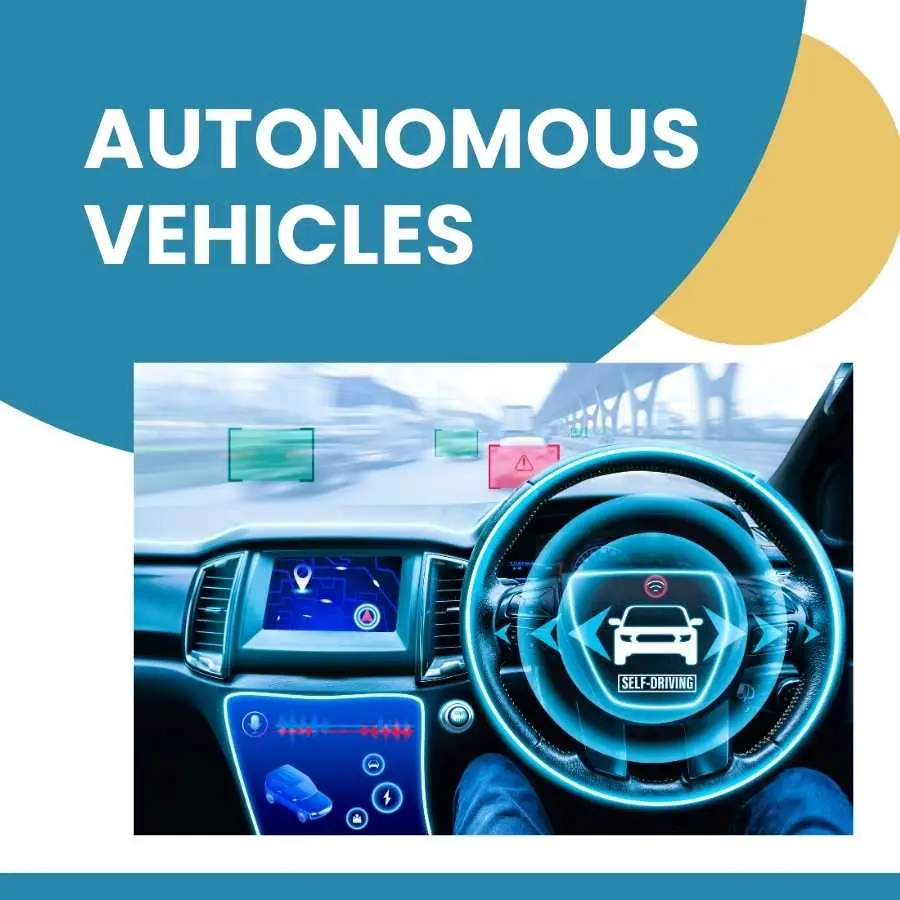
Importance of Continued Education and Policy Improvements
While technological advancements are essential, they must be complemented by continued public education and policy improvements to achieve meaningful progress in vehicle safety. Experts emphasize the following areas of focus:
- Public Education: Continuous efforts to educate the public about safe driving practices, the importance of vehicle maintenance, and the benefits of advanced safety features are vital. Campaigns like Arrive Alive and initiatives by the Automobile Association should be expanded to reach a broader audience, particularly in rural areas where road safety awareness may be lower.
- Driver Training Programs: Enhanced driver training programs that incorporate the latest safety technologies and defensive driving techniques can help improve driver behavior. These programs should be made widely available and accessible to all drivers, including new and experienced ones.
- Policy Enhancements: Regulatory bodies must keep pace with technological advancements by updating and enforcing vehicle safety standards. This includes mandating advanced safety features in new vehicles, implementing stricter roadworthiness tests, and introducing penalties for non-compliance. Policies should also address emerging safety concerns related to EVs and autonomous vehicles.
- Infrastructure Investment: Improving road infrastructure is critical to vehicle safety. Investments in maintaining and upgrading roads, installing smart traffic management systems, and ensuring proper signage and lighting can prevent accidents and enhance the overall safety of the road network.
- Collaboration and Research: Ongoing collaboration between government agencies, industry stakeholders, and research institutions is essential to develop and implement effective road safety strategies. Research into the causes of accidents and the effectiveness of safety measures can inform policy decisions and lead to better outcomes.
The future of vehicle safety in South Africa hinges on a holistic approach that integrates technological advancements with education and policy improvements.
By fostering a culture of safety and leveraging the latest innovations, South Africa can make significant strides in reducing road accidents and creating a safer driving environment for all.
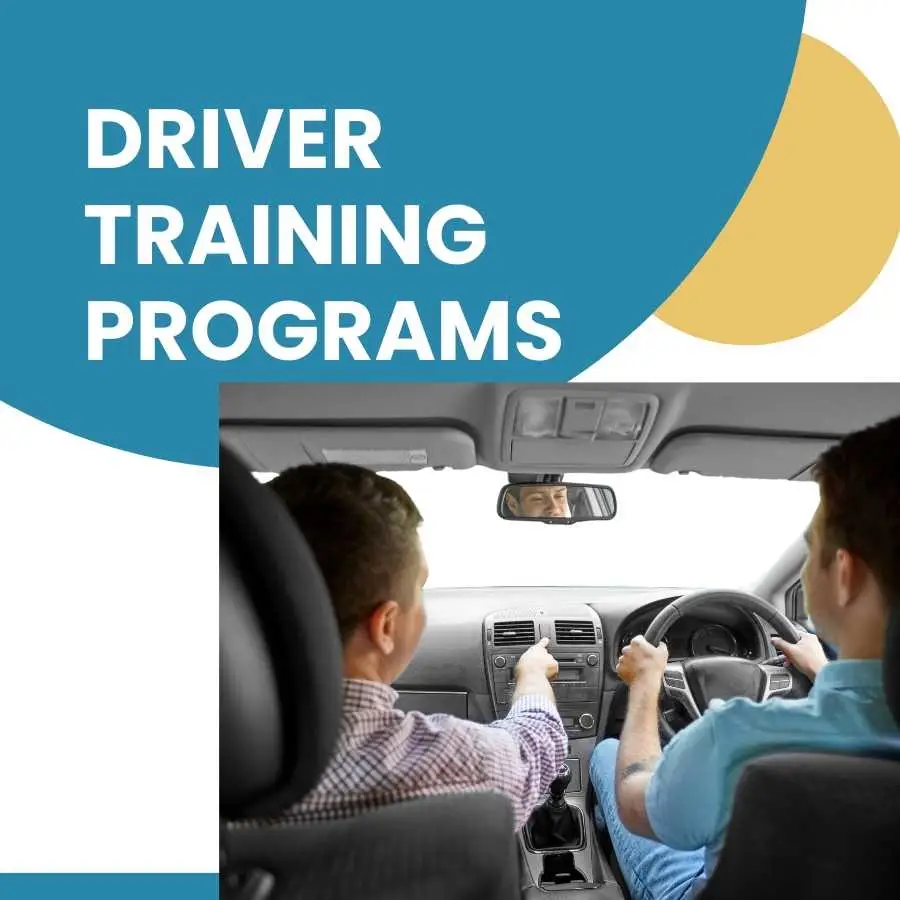
Conclusion
Vehicle safety is a critical issue in South Africa, impacting the lives of thousands of road users each year.
This article has explored various aspects of vehicle safety, including the current landscape of vehicle accidents, the essential and advanced safety features available in modern cars, and the regulatory framework governing vehicle safety standards.
We also delved into public awareness and education efforts, technological innovations, and the challenges and barriers to improving vehicle safety.
Key points discussed include:
- Current Accident Trends: Despite recent improvements, road accidents remain a significant concern, with human factors, poor road conditions, and vehicle-related issues being the primary causes.
- Safety Features: Essential features like ABS, ESC, and airbags, along with advanced technologies like AEB and LDW, play a crucial role in enhancing vehicle safety.
- Regulations and Standards: The National Road Traffic Act, SABS standards, and international initiatives like Global NCAP help ensure vehicle safety, with recent and proposed changes aiming to further improve road safety.
- Public Awareness: Government campaigns, NGO efforts, and private sector contributions are vital in educating the public about vehicle safety.
- Technological Innovations: Telematics, ADAS, V2X communication, and smart traffic systems are transforming vehicle safety, promoting safer driving behaviors, and enhancing road safety.
- Challenges: Infrastructure deficiencies, inconsistent law enforcement, economic barriers, and public behavior pose significant challenges to improving vehicle safety.
The importance of vehicle safety cannot be overstated. It requires a collective effort from the government, regulatory bodies, vehicle manufacturers, and the public to create a safer driving environment.

By prioritizing safety, embracing technological advancements, and fostering a culture of responsibility, we can make significant strides in reducing road accidents and saving lives.
As readers and road users, you play a crucial role in enhancing vehicle safety. Prioritize safety by choosing vehicles with advanced safety features, adhering to traffic laws, and practicing safe driving behaviors.
Support initiatives and campaigns aimed at raising awareness and improving road safety standards. Together, we can create safer roads and ensure a secure future for all South Africans.
Frequently Asked Questions
What are the most common causes of vehicle accidents in South Africa?
Human error, such as speeding and reckless driving, along with poor road conditions and vehicle defects contribute to most accidents.
How do safety features like ABS and airbags improve vehicle safety?
ABS prevents skidding during braking, while airbags cushion passengers in a collision, reducing injury severity.
What role do government regulations play in ensuring vehicle safety?
Regulations set standards for vehicle design and performance, promoting the adoption of safety features and ensuring vehicle roadworthiness.
How can public awareness campaigns improve road safety?
Campaigns educate drivers about safe driving practices, encourage seatbelt use, and discourage drunk driving, fostering a safer road culture.
What are some technological advancements enhancing vehicle safety?
Telematics monitor driving behavior, while ADAS features like lane departure warning help prevent accidents through real-time alerts.
What challenges hinder efforts to improve vehicle safety?
Poor road infrastructure, inconsistent law enforcement, and economic barriers like affordability of safe vehicles pose significant challenges.
How do safety ratings impact consumer choices in vehicle purchases?
Vehicles with higher safety ratings are often preferred by consumers due to their perceived reliability and protection in accidents.
Can ride-hailing services contribute to enhanced safety on the roads?
Yes, ride-hailing companies are integrating safety features like GPS tracking and driver rating systems to enhance passenger safety.
What are the future trends in vehicle safety?
Experts predict increased integration of autonomous driving technology and further advancements in safety features to reduce accidents.
How can individuals contribute to improving vehicle safety?
By adhering to traffic laws, practicing defensive driving, and regularly maintaining their vehicles, individuals play a crucial role in promoting road safety.
Glossary
- ABS (Anti-lock Braking System): A safety feature in vehicles that prevents wheels from locking during braking, enhancing control and reducing skidding.
- ESC (Electronic Stability Control): A technology that helps maintain vehicle stability by detecting and reducing loss of traction.
- Airbags: Inflatable cushions in vehicles that deploy upon impact to cushion passengers from collision forces.
- Telematics: The integration of telecommunications and informatics to monitor and transmit data about vehicle usage and performance.
- AEB (Autonomous Emergency Braking): A safety feature that automatically applies brakes in emergency situations to prevent collisions.
- LDW (Lane Departure Warning): An alert system that warns drivers if their vehicle unintentionally drifts out of its lane.
- BSM (Blind Spot Monitoring): A system that detects and alerts drivers to vehicles in their blind spots, reducing the risk of collisions during lane changes.
- NCAP (New Car Assessment Program): A program that evaluates vehicle safety by conducting crash tests and assigning safety ratings.
- V2X Communication: Vehicle-to-Everything communication technology that enables vehicles to exchange information with other vehicles and infrastructure.
- ADAS (Advanced Driver Assistance Systems): Technologies designed to assist drivers in the driving process, such as adaptive cruise control and automatic parking.
- Global NCAP: An organization that conducts independent crash tests and promotes vehicle safety worldwide.
- Safer Cars for Africa: An initiative aimed at improving vehicle safety standards and promoting the adoption of safer vehicles in Africa.
- Lane Departure Warning: An alert system that warns drivers when their vehicle unintentionally drifts out of its lane.
- GPS Tracking: Global Positioning System technology used to track and monitor the location of vehicles in real-time.
- Autonomous Vehicles: Self-driving vehicles equipped with sensors and software to navigate and operate without human input.

